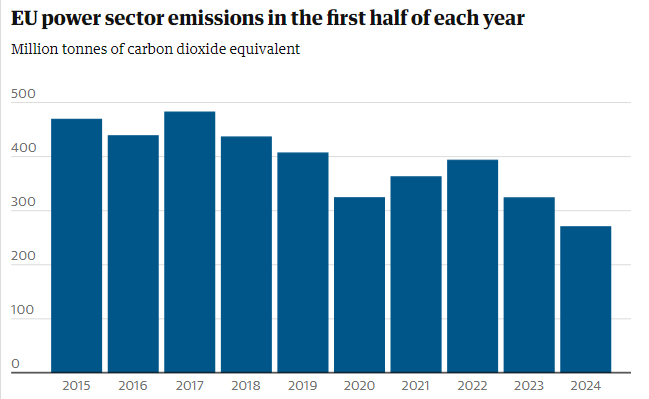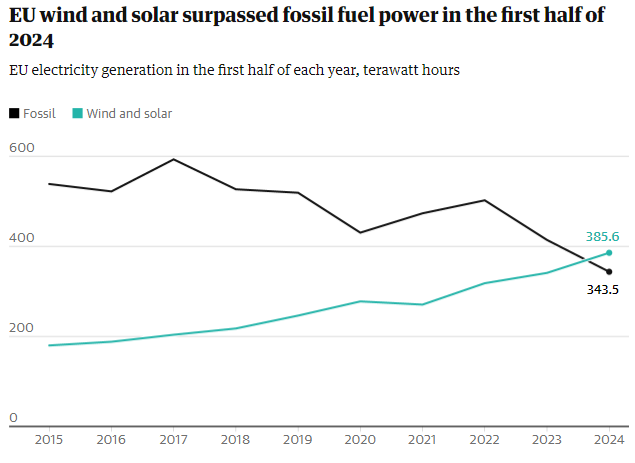
Wind turbines and solar panels have surpassed fossil fuels to account for 30% of the European Union’s electricity in the first half of 2024, according to a new report from climate thinktank Ember.
The report reveals a significant shift away from coal, oil, and gas, with power generation from these fossil fuels dropping 17% compared to the same period last year. This transition has resulted in a one-third reduction in emissions from the power sector since the first half of 2022.
Chris Rosslowe, an analyst at Ember, noted, “We are witnessing a historic shift in the power sector, and it is happening rapidly.” The report highlights a 24% decrease in coal consumption and a 14% reduction in gas use over the past year. This change comes despite a modest increase in electricity demand following two years of decline due to the pandemic and the Ukraine conflict.
Rosslowe emphasized that maintaining momentum in wind and solar deployment is crucial for reducing reliance on fossil fuels. “If member states can keep momentum up on wind and solar deployment then freedom from fossil power reliance will truly start to come into view,” he said.
Europe, historically one of the largest polluters contributing to global warming, is now making significant strides towards cleaner energy. The invasion of Ukraine by Russia has accelerated the EU’s transition to renewable energy, with leaders adopting more aggressive targets and easing regulatory barriers.

However, while solar power has seen substantial growth, the wind industry faces challenges including high inflation and opposition from both politicians and the public. The EU added a record 16.2GW of new wind power capacity in 2023, according to Wind Power Europe, though this fell short of the amount needed to meet its climate targets for the decade.
The Ember report shows that 13 EU member states generated more electricity from wind and solar than from fossil fuels in the first half of 2024. Notably, Germany, Belgium, Hungary, and the Netherlands achieved this milestone for the first time.

Andrea Hahmann, a scientist at Denmark Technical University who contributed to an IPCC report on energy systems, described the development as “significant but not surprising.” She explained, “Strong winds were prevalent during the first six months of 2024 in northern Europe, where most wind energy is generated. The ‘crossing of the lines’ demonstrates that the EU’s electricity transition is possible, and we should not give in to pessimism. The renewable energy targets that must be met are substantial but achievable with the proper policy measures.”






